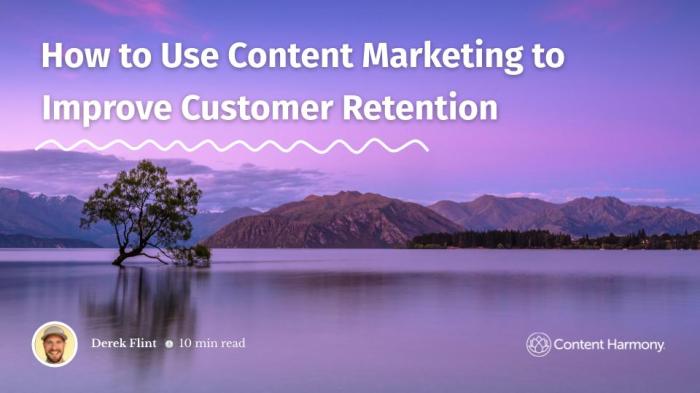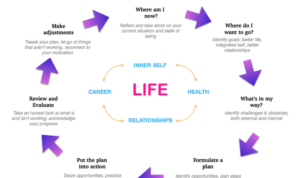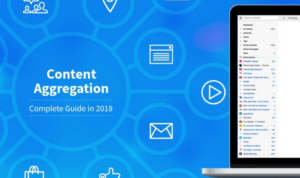Kicking off with Using Content to Improve Retention, this topic dives into the key strategies and tactics that successful companies use to keep users coming back for more. From personalized content to interactive experiences, get ready to learn how to boost retention rates like a pro.
Importance of Content in Retention Strategies

Content is a vital component in retention strategies as it helps in keeping users engaged and interested in a product or service. By providing valuable and relevant content, companies can establish a connection with their audience, leading to increased loyalty and retention rates.
Successful Examples of Content Utilization
- Netflix: The streaming giant creates original content tailored to users’ preferences, keeping them hooked and subscribed.
- Sephora: The beauty retailer offers personalized product recommendations and tutorials, enhancing user experience and retention.
- Red Bull: Through action-packed videos and engaging stories, Red Bull keeps its audience entertained and loyal to the brand.
Impact of Personalized Content on User Engagement
Personalized content plays a significant role in boosting user engagement and retention rates. By tailoring content based on user preferences, behavior, and demographics, companies can create a more personalized experience, resulting in higher levels of engagement and increased retention. Providing relevant recommendations, targeted promotions, and customized communication can go a long way in keeping users invested in a brand or product.
Types of Content for Improving Retention
In the digital age, there are various types of content that can play a crucial role in improving user retention on platforms. These content formats not only engage users but also keep them coming back for more.
Blogs
- Blogs are a great way to provide valuable information to users in a more detailed and informative manner.
- They can help establish expertise, build trust, and keep users engaged with fresh and relevant content.
Videos
- Videos are highly engaging and can convey information in a more visual and interactive way.
- They are effective in capturing users’ attention and can be a powerful tool in retaining users on a platform.
Infographics
- Infographics are visually appealing and can simplify complex information into easy-to-understand graphics.
- They are great for conveying data and statistics in a more digestible format, keeping users interested and informed.
Interactive Content
Interactive content, such as quizzes, polls, and interactive tools, can significantly enhance user retention by providing a personalized and engaging experience for users. This type of content encourages active participation and can create a sense of connection with the platform, leading to higher retention rates.
Consistent Content Delivery
Consistency in content delivery is key to retaining users on a platform. Regularly updating and posting new content keeps users engaged and coming back for more. Whether it’s daily blog posts, weekly videos, or monthly infographics, a consistent content schedule helps establish a routine for users and builds anticipation for what’s to come next.
Content Tailored to Different User Segments: Using Content To Improve Retention
When it comes to improving retention, creating targeted content for specific user segments is crucial. Tailoring your content to different groups of users helps in establishing a more personalized and engaging experience, ultimately leading to increased retention rates.
The Importance of Personalizing Content
- Personalizing content based on user behavior and preferences shows that you understand your audience and care about their individual needs.
- It helps in building a stronger connection with users, making them feel valued and more likely to continue engaging with your platform or service.
- By delivering relevant content to each user segment, you can increase the chances of them finding value in your offerings and staying loyal to your brand.
Strategies for Personalizing Content
- Utilize data analytics to track user interactions and behavior patterns, allowing you to identify specific interests and preferences.
- Create segmented content based on demographics, past interactions, purchase history, and other relevant data points.
- Implement dynamic content that adjusts based on user actions, providing a more personalized experience in real-time.
The Role of Data Analytics, Using Content to Improve Retention
- Data analytics plays a crucial role in understanding user preferences for tailored content by providing insights into user behavior and engagement metrics.
- By analyzing data, you can identify trends, patterns, and opportunities to improve content relevance and effectiveness for different user segments.
- Utilize A/B testing and user feedback to continuously optimize and refine your content strategy based on real-time data insights.
Measuring Content Effectiveness in Retention

When it comes to measuring the impact of content on user retention, there are several key metrics that are commonly used by businesses and marketers. These metrics help in evaluating the effectiveness of the content strategy and making data-driven decisions to optimize content for improved retention rates.
Key Metrics for Measuring Content Impact
- Conversion Rate: This metric measures the percentage of users who take a desired action after engaging with the content, such as making a purchase or signing up for a newsletter.
- Retention Rate: The retention rate indicates the percentage of users who continue to engage with the platform or product over a specific period, showing the effectiveness of content in keeping users interested.
- Engagement Metrics: Metrics like time spent on page, bounce rate, and scroll depth provide insights into how users are interacting with the content and can indicate the effectiveness of the messaging and format.
A/B Testing for Content Optimization
Using A/B testing is a crucial technique in optimizing content for improved retention. By comparing two versions of content (A and B) with small variations in elements like headlines, images, or call-to-action buttons, businesses can identify which version performs better in terms of user retention. This data-driven approach helps in making informed decisions to enhance content effectiveness.
Tools for Analyzing Content Performance
- Google Analytics: A widely used platform that provides detailed insights into user behavior, traffic sources, and content performance, helping businesses track the impact of content on retention.
- Hotjar: This tool offers heatmaps, session recordings, and user surveys to understand how users interact with content, enabling businesses to optimize content for better retention rates.
- Optimizely: A platform that allows for easy A/B testing and personalization of content, helping businesses tailor their messaging to different user segments for improved retention.






